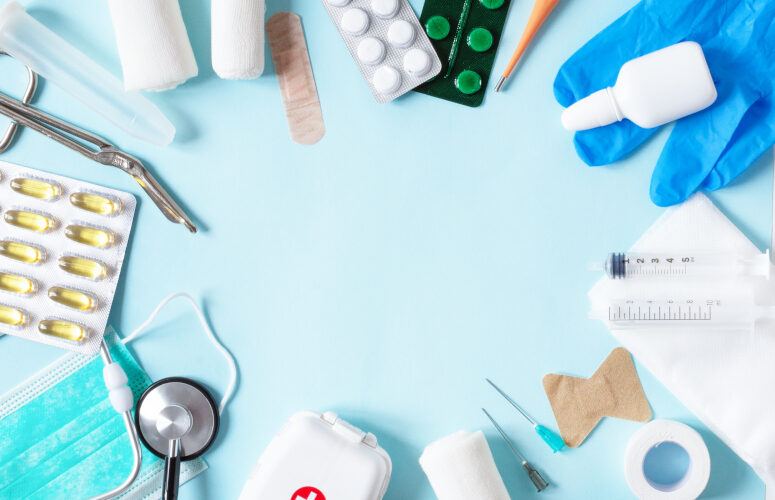
NJ Hospital Quality Initiative Averts 13,730 Cases of Harm, $120 Million in Costs
Federal Officials Select NJHA for Round 2 of Program
On Mar 30, 2016More than 13,730 cases of patient harm averted and $120 million in healthcare cost savings … These are the final results of a three-year initiative by New Jersey hospitals to confront and reduce the incidence of complications for hospitalized patients.
The initiative, Partnership for Patients-New Jersey, was part of the national Partnership for Patients project, spearheaded by the US Centers for Medicare and Medicaid Services and involving hospitals across the country. In New Jersey, the effort was led by the New Jersey Hospital Association’s Institute for Quality and Patient Safety, which was designated as one of 27 “hospital engagement networks” nationwide.
And now, NJHA’s Health Research and Educational Trust has been selected as one of 17 national, regional or state hospital associations and health system organizations to continue efforts in reducing preventable hospital-acquired conditions and readmissions. Through the Partnership for Patients nationwide public-private collaboration, which began in 2011 to reduce preventable hospital-acquired conditions by 40 percent and 30-day readmissions by 20 percent, NJHA is participating in a second round of hospital engagement networks to continue working to improve patient care in the hospital setting.
Since the launch of the Partnership for Patients, the vast majority of US hospitals and many other stakeholders have joined the collaborative effort and delivered results. The Department of Health and Human Services has estimated that 50,000 fewer patients died in hospitals and approximately $12 billion in healthcare costs were saved as a result of a reduction in hospital-acquired conditions from 2010 to 2013. Nationally, patient safety is improving, resulting in 1.3 million adverse events and infections avoided in hospitals. This translates to a 17 percent decline in hospital-acquired conditions over the three-year period.
In New Jersey, NJHA worked with the state’s hospitals from 2012 through 2014 in a program that focused on education from national experts, sharing of best practices and detailed data reporting to achieve better, safer healthcare services for patients.
“As healthcare grows in complexity, it’s important to focus on the heart of what we do – and that is caring for our patients and keeping them safe,” said NJHA President and CEO Betsy Ryan. “We are thrilled with these results because they represent real lives positively impacted by the focus and commitment of our hospital teams. Reduced cost for our healthcare system is icing on the cake.”
Those results are attributable to reduced rates in so-called “hospital-acquired conditions,” or complications that can arise during a hospital stay – things such as post-surgical infections, pressure ulcers or medication errors. New Jersey hospitals posted a 27.1 percent average reduction in these conditions in 2014. New Jersey hospitals also achieved a 7.7 percent decrease in the rate of patients readmitted to the hospital within 30 days of a prior hospital stay.
Following are some of the specific results on each indicator:
- Adverse drug events declined from 10.4 percent to 6.5 percent, a reduction of 37.9 percent.
- Catheter-associated urinary tract infections declined from a rate of 2.27 per thousand catheter days to 1.72, a reduction of 24.1 percent.
- Central line-associated bloodstream infections declined from a rate of 1.40 infections per thousand central line days to 1.07, a reduction of 23.5 percent.
- Early elective deliveries declined from 2.9 percent to 0.9 percent, a reduction of 69.9 percent.
- Obstetric trauma declined from a rate of 148.5 per 1,000 to 99.6 per 1,000 (with a medical instrument) and from 24.5 per 1,000 to 17.9 (without instrument.) The rate reduction is 33 percent and 27.1 percent, respectively.
- Pressure ulcers declined from a rate of 1.79 per 1,000 to 1.39 per 1,000, a reduction of 27.1 percent.
- Surgical site infections following colon surgery declined from 4.34 percent to 2.01 percent, a reduction of 53.6 percent.
- Surgical site infections following total knee replacement declined from 1.03 percent to 0.29 percent, a reduction of 71.9 percent.
- Venous thromboembolism (blood clots) declined from 0.73 percent to 0.62 percent, a reduction of 14.1 percent.
- Hospital readmissions within 30 days declined from 21.4 percent to 19.8 percent, a 7.7 percent reduction.
By comparing those new rates against the industry’s standard expected rates, this work has averted a case of medical harm for 13,730 New Jersey patients by the end of the three-year initiative. Those averted complications saved the healthcare system about $120 million in added costs, according to cost data from the US Agency for Healthcare Research and Quality. The largest cost savings come from the reduction in hospital readmissions, which accounts for about $84 million of the projected savings.
Data collection is a key part of the quality improvement process. All hospitals routinely share their data with NJHA and CMS, along with an independent evaluator, so their performance can be benchmarked against other facilities.
“This work has a very real impact on patients,” said Dr. Aline Holmes, RN, DNP, NJHA’s senior vice president of clinical affairs and director of NJHA’s Quality Institute. “It means better care, shorter hospital stays and better patient outcomes. I’m especially proud of the areas like surgical site infection rates and birth issues like early elective deliveries, where New Jersey hospitals not only have improved their results over time, but have also performed much better than the national average.”
Holmes said 30-day readmission rates are another key issue for New Jersey. The Garden State has traditionally had one of the nation’s highest rates of readmission, and now research has shown that socioeconomic factors make it more difficult for states like New Jersey, with many urban communities, to reduce hospital readmissions.
“There are numerous personal economic factors that affect whether a patient may return to the hospital after an initial stay, such as whether a patient can afford prescriptions or whether transportation is available for follow-up appointments,” said Holmes. “But the good news is that New Jersey hospitals are making progress, and our work on readmissions alone has resulted in $84 million in reduced healthcare costs in our state.”
The second iteration of the Partnership for Patients program utilizes trained healthcare navigators to screen for patients who may have social factors that would make them more susceptible to readmission to a hospital within 30 days of discharge. These navigators, working in three southern New Jersey counties among the worst in readmission rates, will connect at-risk people with the housing, behavioral health and primary care services they are missing, as well as empower consumers to engage more in their own care.
The full report on New Jersey’s Year 3 results can be found at www.njha.com/media/330779/P4P-Year-Report-15.pdf.
Related Articles:






